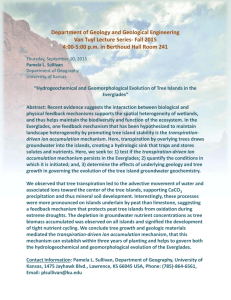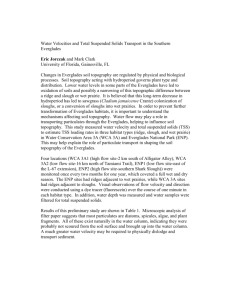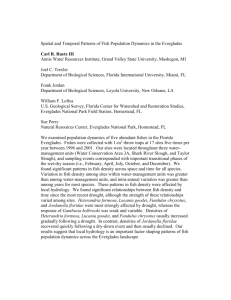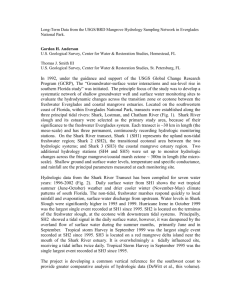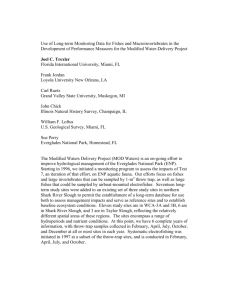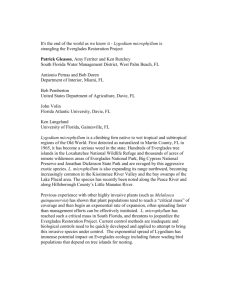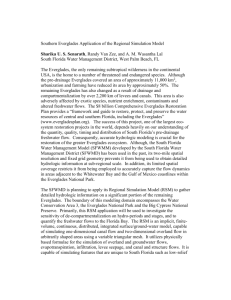Everglades Tree-Island Response to Hydrologic Change
advertisement
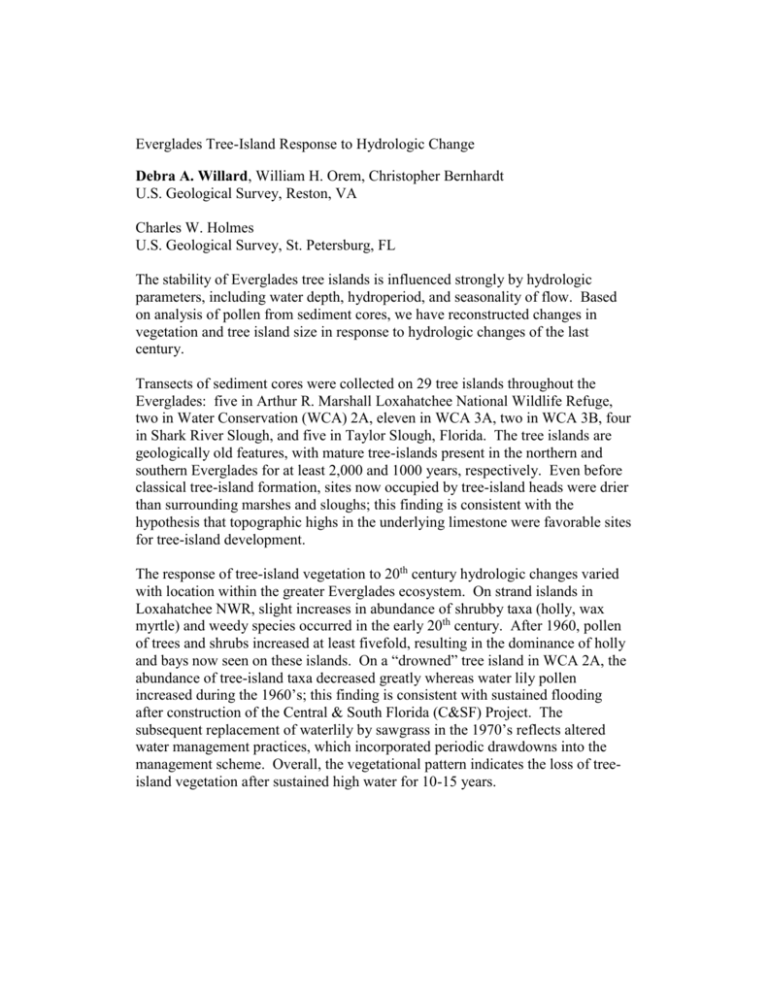
Everglades Tree-Island Response to Hydrologic Change Debra A. Willard, William H. Orem, Christopher Bernhardt U.S. Geological Survey, Reston, VA Charles W. Holmes U.S. Geological Survey, St. Petersburg, FL The stability of Everglades tree islands is influenced strongly by hydrologic parameters, including water depth, hydroperiod, and seasonality of flow. Based on analysis of pollen from sediment cores, we have reconstructed changes in vegetation and tree island size in response to hydrologic changes of the last century. Transects of sediment cores were collected on 29 tree islands throughout the Everglades: five in Arthur R. Marshall Loxahatchee National Wildlife Refuge, two in Water Conservation (WCA) 2A, eleven in WCA 3A, two in WCA 3B, four in Shark River Slough, and five in Taylor Slough, Florida. The tree islands are geologically old features, with mature tree-islands present in the northern and southern Everglades for at least 2,000 and 1000 years, respectively. Even before classical tree-island formation, sites now occupied by tree-island heads were drier than surrounding marshes and sloughs; this finding is consistent with the hypothesis that topographic highs in the underlying limestone were favorable sites for tree-island development. The response of tree-island vegetation to 20th century hydrologic changes varied with location within the greater Everglades ecosystem. On strand islands in Loxahatchee NWR, slight increases in abundance of shrubby taxa (holly, wax myrtle) and weedy species occurred in the early 20th century. After 1960, pollen of trees and shrubs increased at least fivefold, resulting in the dominance of holly and bays now seen on these islands. On a “drowned” tree island in WCA 2A, the abundance of tree-island taxa decreased greatly whereas water lily pollen increased during the 1960’s; this finding is consistent with sustained flooding after construction of the Central & South Florida (C&SF) Project. The subsequent replacement of waterlily by sawgrass in the 1970’s reflects altered water management practices, which incorporated periodic drawdowns into the management scheme. Overall, the vegetational pattern indicates the loss of treeisland vegetation after sustained high water for 10-15 years. Sites in WCA 3A and B have insufficient sedimentation rates to resolve 20th century changes; however, assemblages from sediments deposited during the last 500 years show little change. On and around tree islands in Shark River Slough in Everglades National Park, pollen of marsh taxa disappeared almost entirely ~1930, when initial canal and road construction was completed. After 1960, replacement of taxa characteristic of relatively wet conditions with tree-island taxa suggests that the tree island head expanded southward as fresh-water flow was reduced to Shark River Slough. Our results indicate that tree-island response to future hydrologic response will not be uniform within the Greater Everglades ecosystem. Restoration pre-20th century hydroperiods and water depths to Shark River Slough is likely to result in a decrease in size of tree-island heads, whereas drowned tree islands in WCA 2A may see a gradual increase in size and restoration of previous tree-island plant communities. The distinctive composition of Loxahatchee strand islands also is a recent vegetational feature, and changes in biodiversity at those sites are likely as hydrology is altered. Our results highlight the variability of tree-island composition within the Everglades and indicate that no single performance measure should be devised to evaluate the success of tree-island restoration throughout the Everglades. Contact: Debra A. Willard, U.S. Geological Survey, 926A National Center, Reston, VA 20192, Phone: 703-648-5320, Fax: 703-648-6953, dwillard@usgs.gov, Oral, Hydrology and Hydrological Modeling
